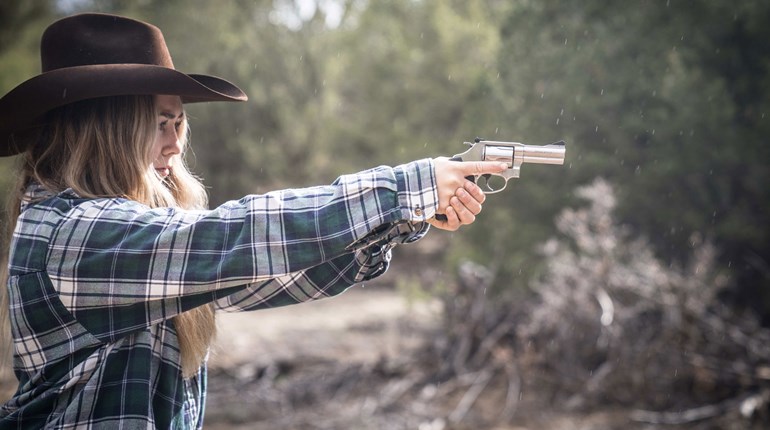
If you’re not familiar, the term “patterning” a shotgun means to shoot it at a board covered with a piece of paper so you can see exactly how the individual pellets will hold together in a pattern as they impact the target at a given distance. You’re checking for a couple of things when you pattern, but most commonly, how dense the pellet count is at different distances and how far off the center of the pattern is from where you were aiming.
Shooting without knowing your pattern is a bit like shooting a rifle you haven’t sighted in. Without patterning, you’ll have no idea what your projectiles are doing, and your accuracy will suffer.
To pattern properly, staple a large piece of paper (3x3 feet or larger) to a plywood target. Draw a circle bullseye in the center. Set up at the distance you want to test, carefully aim the shotgun at the bullseye and fire one shot (use a solid rest if this is a turkey-hunting gun; wingshooters and clay target shooters typically hold the gun properly mounted and fire). Consider doing this twice with clean paper to make sure you are holding consistently. Clear your gun and go downrange to examine the pattern of holes.

Figure out where the center of the main part of your pattern appears to be, then draw a circle about 30 inches in diameter around that center. The center might or might not be the bullseye you were aiming at. There will likely be some fringe holes outside the circle.
If there are enough pellets in that 30-inch circle to reliably break a clay target or kill a bird, depending on the goal, this part is settled. (The circle can be smaller if you are hunting a stationary target like turkeys, or use an actual turkey-head target.) If there aren’t, you need to change to a tighter choke tube constriction and/or shorten the distance until your pattern is sufficiently dense. You don’t want to see holes in your pattern where a bird or a target could slip through unscathed.
Next, look at where the center of your pattern is relative to where you were aiming. If you are shooting clay targets, you might want the pattern to hit a little high—60 percent or even 70 percent of the pellets above the bull’s-eye is common. For most other purposes, you want the center to be right around the bull’s-eye, which we call 50/50 (50 percent of the pattern above, 50 percent below). If the gun is shooting too high or too low, and you’re sure you are mounting and aiming properly, the gun will require some adjustment to the comb, the rib or both in order to pattern at the height you’re looking for.
When you think you’ve got the pattern the way you like it, shoot the gun several more times at a clean sheet of paper each time to make sure it’s consistent. Every pattern is a little bit different.
How bad is it to take a shotgun out and not pattern it? It’s a bad idea, but just how bad depends on what you’re hunting. For turkeys, where you’ll be shooting a very tight pattern at a small, probably stationary target, shooting an unknown pattern is an absolutely disastrous idea. You have little room for error with a tight pattern, and if your gun is shooting even a few inches high or low or is much less dense than you are hoping, you could easily miss or wound a turkey.
For wingshooting of waterfowl and upland birds, not patterning is a bad idea because although you have more margin when swinging on moving targets, a pattern that is too dense for the distance or not dense enough will cause unnecessary misses or allow birds to slip through the pattern, possibly being wounded rather than cleanly harvested.
If you’re shooting clays, the same applies—if you don’t know your pattern, you will definitely miss more targets than you otherwise would. No harm, no foul here because they’re just clay targets rather than living things, but still—you want every advantage when you hit the course, don’t you? And if your gun shoots lower than you expect it to, you’ll struggle to break rising targets like those seen in trap.
Patterning a shotgun isn’t especially exciting, but it’s a necessary step to responsible shooting, and knowing exactly what your gun/load/choke combination is capable of at a given distance will make you a better and more confident shooter.














































